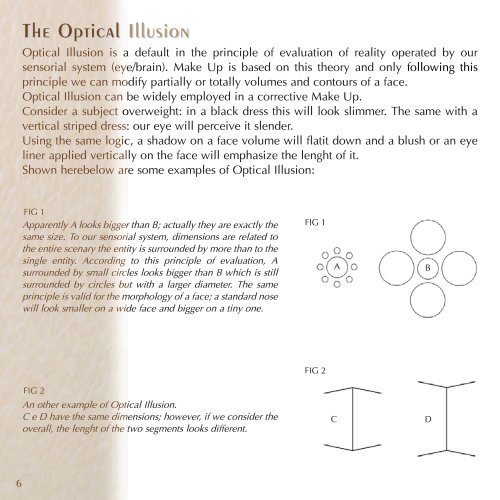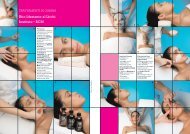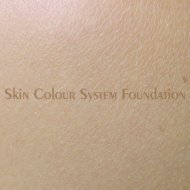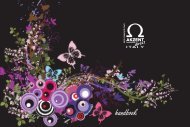Download handbook - BCM
Download handbook - BCM
Download handbook - BCM
You also want an ePaper? Increase the reach of your titles
YUMPU automatically turns print PDFs into web optimized ePapers that Google loves.
The Optical Illusion<br />
Optical Illusion is a default in the principle of evaluation of reality operated by our<br />
sensorial system (eye/brain). Make Up is based on this theory and only following this<br />
principle we can modify partially or totally volumes and contours of a face.<br />
Optical Illusion can be widely employed in a corrective Make Up.<br />
Consider a subject overweight: in a black dress this will look slimmer. The same with a<br />
vertical striped dress: our eye will perceive it slender.<br />
Using the same logic, a shadow on a face volume will flatit down and a blush or an eye<br />
liner applied vertically on the face will emphasize the lenght of it.<br />
Shown herebelow are some examples of Optical Illusion:<br />
FIG 1<br />
Apparently A looks bigger than B; actually they are exactly the<br />
same size. To our sensorial system, dimensions are related to<br />
the entire scenary the entity is surrounded by more than to the<br />
single entity. According to this principle of evaluation, A<br />
surrounded by small circles looks bigger than B which is still<br />
surrounded by circles but with a larger diameter. The same<br />
principle is valid for the morphology of a face; a standard nose<br />
will look smaller on a wide face and bigger on a tiny one.<br />
FIG 1<br />
A<br />
B<br />
FIG 2<br />
FIG 2<br />
An other example of Optical Illusion.<br />
C e D have the same dimensions; however, if we consider the<br />
overall, the lenght of the two segments looks different.<br />
C<br />
D<br />
6






